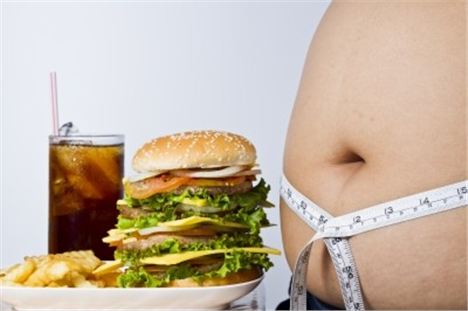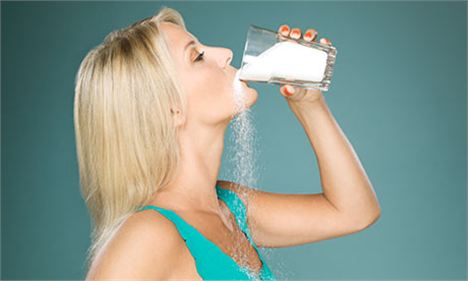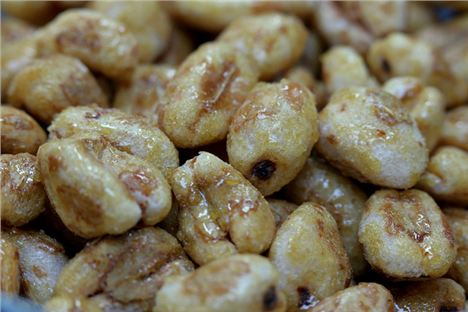RECENTLY anyone interested in food and nutrition will have noticed that fat seems to have been replaced by sugar as the nation's 'food enemy number one'.
Suggesting that people cut down on sugar is often met with horror and outrage - why be such a killjoy?
Last year campaigners 'Action on Sugar' called on the government to tax products containing sugar and to regulate the amount that can be used in processed foods. Just this month, the manufacturers of Sugar Puffs announced they're changing the name of the breakfast cereal to 'Honey Monster Puffs' in a bid to persuade parents that it's not as unhealthy as the name suggests (I'll get to its sugar count later on in the article).
It's a topic that has been bubbling under in nutrition circles for a while but has gained wider recognition since the American endocrinologist and obesity expert, Robert Lustig, published his book Fat Chance: The Bitter Truth About Sugar which explains why diets generally don't work and why the high levels of sugar we eat are fuelling obesity and diabetes epidemics.
 Sugar Puffs to be rebranded as 'Honey Puffs'
Sugar Puffs to be rebranded as 'Honey Puffs'
The bitter sweet reality is that sugar is the ultimate ingredient in our favourite refined food. We now consume, on average, 60g of added sugar every day, approximately fifthteen teaspoonfuls.
While it may seem so, refined sugar is not a natural part of our diet. Sure, it comes from plant sources, sugar beet and sugar cane, but all are processed to extract the sweet stuff from the rest of the plant and the end product is exactly that, 100% sugar: no vitamins, minerals, fibre or any other nutrients remain.
And the trouble with sugar, as a lot of us may have discovered, is that too much of it makes us fat.
Insulin is the hormone that helps to balance sugar levels in the bloodstream by promoting any excess to be stored as fat, typically around our waists. This was a really useful mechanism when we all lived in caves, as it meant that, at times when food wasn't plentiful, we could have energy reserves for when food was more scarce. However in modern times, when food is always plentiful, it has contributed to the rise in obesity that we currently see.
 Sugars in refined foods have contributed to our large waistlines
Sugars in refined foods have contributed to our large waistlines
As is the way with too much of a sweet thing, over time it gets worse. With constantly high levels of sugar, the body can become immune to the effects of insulin and the sugar regulating system starts to break down, which may lead to type 2 diabetes, another disease at epic proportions in the Western world. Some forms of heart disease are also linked to this disruption in energy regulation. Other chronic diseases too are thought by some experts to be linked to over-consumption of sugar, all of which adds up to a huge increased burden on the NHS.
Part of the problem is that we are pre-programmed to seek out sweet foods. As mentioned above, sweet foods are also a good source of energy, which is useful in a hunter-gatherer society when getting food involved a lot of physical activity, but very different in today's world where we drive to the supermarket or order shopping on-line to be delivered to our doors.
Of course, it is advised that people cut down on sugar; from adding less in our tea, to making better choices when walking down the dreaded sweet aisle in Asda. However, suggesting that people cut down, is often met with horror and outrage - why be such a killjoy? Surely we're all allowed a little treat every now and then? Well yes, of course, but the reality is that 'every now and then' often translates into every day, several times a day.
 A little sugar 'every now and then'
A little sugar 'every now and then'
We are surrounded by processed foods, especially snack foods, which are often very high in sugar. Even worse are sugary drinks, which we generally don't even register as food, but which pump a huge injection of energy into our bodies. Consuming all this sugar interferes with the 'I'm full' message reaching the brain. Unlike foods high in protein or fat, eating high sugar foods can lead to cravings for more and bingeing.
So we need to make more mindful choices. Here's how:
Start checking labels and you'll be surprised at where sugar turns up; you can find it in soups and sauces, sandwiches, cold meats and sausages, crisps, dips, etc, etc. Foods labelled as 'low-fat' tend to be high in sugar and part of the rise of hidden sugars in foods is due to the perceived health benefits of reducing fats.
 'Honey Puffs now have less sugar - but honey is high in frucose ( Photo credit: Graham Defries)
'Honey Puffs now have less sugar - but honey is high in frucose ( Photo credit: Graham Defries)
Processed foods tend to use not just ordinary 'table sugar' (sucrose) but often contain a variety of other sugars, often disguised as 'syrups'. On labels anything ending in '-ose' is a sugar (sucrose, fructose, glucose, etc) and anything listed as a syrup is also a sugar. Fructose, which is being used increasingly in processed food and drinks, is particularly problematic because the way it is processed in the body is more likely to lead to insulin resistance.
Honey, too, for all its healthy connotations, is a sugar and is high in fructose.
So, returning to the Sugar Puffs, as well as renaming them, the manufacturers are also reducing the sugar content but increasing the honey, which, as we now know, is still a sugar, reducing the overall sugar content from 31% to 29% - anything over 10% is a lot of sugar and over 20% is very high.
Name change or not, that's not what I would consider a healthy amount.
The advice given here is not intended to replace medical advice. Always consult your GP if you are concerned about your health. Clare Jones, BA(Hons), Dip ION, mBANT NTC & CNHC Registered Nutritional Therapist.
Follow Clare on Twitter @ClareJonesNutri and Facebook www.facebook.com/ClareJonesNutritionalTherapy



